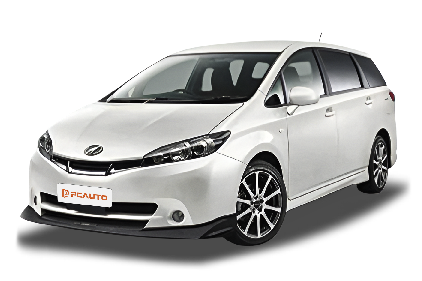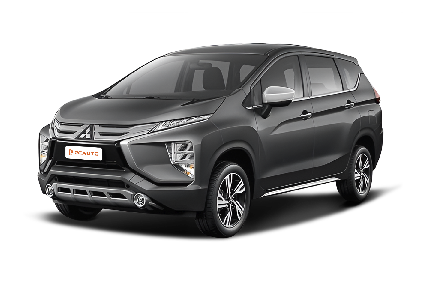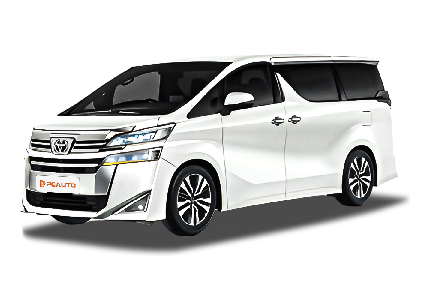Q
how much is toyota wish new model
When it comes to the price of the new Toyota Wish in Malaysia, Toyota Malaysia hasn't officially brought in the latest generation of the Wish, so there's no official pricing available in the local market right now. However, consumers can check out second-gen Wish models (which were discontinued before 2020) through parallel import channels. Their prices typically range from around RM60,000 to RM120,000, depending on the vehicle's condition and year.
It's worth noting that the Toyota Wish is known for its spacious 7-seater layout and reliable hybrid system, making it a great fit for family users. Even though the new generation hasn't hit Malaysian shores, other Toyota models currently on sale here like the Innova or Corolla Cross offer similar options for family-oriented buyers.
For Malaysian consumers looking to buy imported cars, it's important to keep an eye on AP permit fees, vehicle inspection procedures, and subsequent maintenance costs. It's advisable to get a complete quotation from legitimate car dealers. Additionally, referring to the annual sales data released by the Malaysian Automotive Association (MAA) can help gauge a model's popularity as a supplementary reference.
Q
what is the fuel consumption of toyota wish
The fuel consumption of the Toyota Wish varies depending on the model year and drivetrain. For the early 2003-2009 models, the 1.8L variant with the 3ZR-FE engine delivers a combined fuel economy of approximately 7.5-8.2L/100km, while the 2.0L version (1AZ-FE engine) is slightly thirstier at around 8.0-8.8L/100km. The facelifted models from 2010 onwards saw about a 5% improvement in fuel efficiency through engine tuning refinements. However, real-world performance can fluctuate based on driving conditions and habits – for instance, navigating the congested streets of Kuala Lumpur might bump up fuel consumption by 10-15%.
As a 7-seater MPV, the Wish fares better at the pumps than its Japanese rivals like the Honda Stream from the same era, though it can't quite match the frugality of compact sedans. This gap mainly comes down to its heftier body weight and higher drag coefficient. Malaysian owners should keep on top of regular maintenance – think fresh spark plugs and air filters – and using low-viscosity engine oils like 0W-20 or 5W-30 can help squeeze out better mileage. Additionally, keeping tire pressures properly set (around 210-230kPa) and avoiding aggressive acceleration can noticeably cut down on fuel use.
Even though production has ceased, the Wish remains a hot pick in the used car market, and its solid fuel economy and proven durability still make it a compelling option worth considering.
Q
how much is toyota wish
So, let's talk about the Toyota Wish in Malaysia. First off, this model was discontinued back in 2017, so you won't find any brand-new ones on the market anymore. But if you're open to a used ride, there are still plenty floating around in the second-hand scene. Prices can vary a lot depending on the year, mileage, and overall condition—you're looking at roughly between RM30k to RM80k. For an early 2010s base model, you might pick one up for around RM30k to RM40k, while a top-spec 2015-ish model could set you back closer to RM70k to RM80k.
As a classic 7-seater MPV, the Wish has always been a hit with families here. Its durability, fuel efficiency, and flexible interior space make it super practical—perfect for big Malaysian households or folks who need to haul stuff around regularly. The 2.0L engine paired with a CVT gearbox offers a smooth drive and doesn't guzzle too much petrol, which is a big plus.
If you're scouting for a used Wish, here's my two cents: Pay extra attention to the CVT transmission condition and check for aging in the chassis rubber components. Also, it's worth asking if there's any remaining factory warranty—though that's rare on older units. Of course, newer alternatives like the Toyota Sienta or Honda BR-V are worth considering too; they come with updated tech and longer warranties. But the Wish still holds its ground with its tried-and-tested design and solid reputation in the market.
Q
toyota wish how many seater
The Toyota Wish is a 7-seater compact MPV that's perfect for Malaysian families. Its flexible seating configuration and roomy interior make it ideal for group outings. The second-row seats slide and fold, while the third row works well for kids or short trips – and even with all seven seats in use, there's still some cargo space in the boot.
It's no wonder the Wish is a hit in Malaysia. With Toyota's reputation for reliability, impressive fuel efficiency, and a solid after-sales service network, it's become a top pick for many households. Under the hood, you'll find either a 1.8L or 2.0L naturally aspirated engine, delivering smooth performance that handles both city commutes and long drives with ease. The suspension is tuned for comfort too, which is great for Malaysia's mixed road conditions.
If you're on the hunt for a practical, fuel-efficient 7-seater with versatile space, the Wish should be on your list. It also holds its value well in the used car market, and maintenance costs are pretty reasonable.
Q
how much is toyota supra in malaysia
If you're looking to get your hands on a Toyota Supra in Malaysia, prices can vary quite a bit depending on the trim and options you go for. The base 3.0L model typically starts around the RM 600,000 mark and can go up to around RM 700,000, though these numbers might shift a bit with dealer promotions or if you start adding extra features.
Let’s talk about what makes this thing tick. As Toyota’s iconic sports car, the Supra packs a punch with its 3.0L inline-six turbo engine, cranking out 340 horsepower. Pair that with an 8-speed automatic transmission, and you’re looking at some serious performance. And let’s not forget that rear-wheel-drive layout—it’s a big part of the Supra’s DNA, giving it that sharp, engaging handling that driving enthusiasts absolutely love.
In Malaysia, the Supra sits in that niche high-performance category, aimed squarely at folks who live for the thrill of driving. Yeah, it’s not cheap, but between its legendary brand heritage and that pure sports car soul, it definitely stands out from the crowd in its class.
If the Supra’s caught your eye, your best bet is to hit up Toyota Malaysia’s official dealers directly. They’ll have the latest pricing, and you can even book a test drive to feel that power for yourself. Also, don’t sleep on cross-shopping—models like the BMW Z4 or Nissan 370Z are worth checking out too, just to make sure you’re getting exactly what you want before pulling the trigger.
Q
What's the Price of the Toyota Wish in Malaysia?
In Malaysia, the Toyota Wish is a discontinued imported MPV. The prices of its used cars vary depending on the vehicle's condition, production year, and configuration. The used car prices for models from 2010 to 2014 are approximately between RM35,000 and RM65,000. The specific price needs to be evaluated based on the mileage, maintenance records, and modification status. This car is well-known for its practical interior space and reliability. It is equipped with a 1.8L or 2.0L engine, making it a great choice for family users. However, it should be noted that the parts cost of imported cars is relatively high. It is recommended to have the vehicle inspected by PUSPAKOM and check the import information from the Royal Malaysian Customs Department (JKDM) before purchasing. If you're considering a new car in the same class, you can refer to locally assembled (CKD) models such as the Toyota Sienta or the Honda BR - V. These models come with lower maintenance costs and original factory warranties. As for used-car options, there are also Japanese MPVs like the Nissan Grand Livina. It is advisable to make a comprehensive comparison based on your budget and requirements.
Q
Is Toyota Wish a 7 seater?
Yes, the Toyota Wish is indeed a 7-seater vehicle with a 2+3+2 seating arrangement. It's suitable for families or groups that need to carry more passengers. This car is popular in the Malaysian market for its practical interior space and reliability. The Toyota Wish offers a fairly flexible seating configuration. The third-row seats can be folded down to increase the luggage space. However, it should be noted that the legroom in the third row is relatively limited, making it more suitable for children or short trips. As a mid-sized MPV, the Toyota Wish performs well in terms of fuel economy and driving comfort, which makes it ideal for city commuting and family outings. If you're considering buying a 7-seater in Malaysia, the Toyota Wish is a worthy option. You can also compare it with other models in the same class, such as the Honda Stream or the Nissan Grand Livina, to find the vehicle that best meets your needs.
Q
Is Toyota Wish a hybrid car?
The Toyota Wish available in the Malaysian market is mainly the traditional gasoline engine version, rather than the hybrid model. This vehicle is equipped with a 2.0-liter naturally aspirated engine. It's suitable for family use and is well-known for its practicality and spacious interior. Although Toyota has launched multiple hybrid models globally, the Wish isn't included in Toyota's hybrid lineup in Malaysia. Common Toyota hybrid models in the local area include the Prius, Corolla Cross Hybrid, and Camry Hybrid. Hybrid technology combines a gasoline engine and an electric motor to improve fuel efficiency and reduce emissions. It's particularly suitable for the stop-and-go driving conditions in Malaysian cities and can significantly reduce fuel consumption. If consumers are interested in Toyota hybrid models, they can consider the other options mentioned above. These models have a well-established after-sales service and parts support in the local area and can also enjoy tax incentives from the Malaysian government for energy-efficient vehicles (EEV). It should be noted that there may be configuration differences for the Wish in different years or markets. It's recommended to check the latest model information through the official Toyota Malaysia website or authorized dealers.
Q
Is Toyota Wish fuel-efficient?
The Toyota Wish performs well in terms of fuel economy. In particular, its 1.8-liter and 2.0-liter engines, paired with a CVT transmission, can offer a relatively smooth driving experience. At the same time, it can maintain a reasonable fuel consumption level both in urban and highway conditions, making it suitable for daily commuting or long-distance travel of Malaysian family users. According to actual driving feedback, the combined fuel consumption of the Toyota Wish is approximately between 7 and 9 liters per 100 kilometers, and the specific figure will vary depending on driving habits, road conditions, and vehicle maintenance status.
In addition, as an MPV, the Toyota Wish has a spacious and highly practical interior. Although it has a large body, the engine tuning and transmission matching are well-optimized, so it still belongs to the category of vehicles with high fuel efficiency among models in the same class. For Malaysian consumers, if they attach importance to both fuel economy and practicality, the Toyota Wish is a worthy option to consider. Meanwhile, it is recommended to conduct regular maintenance and adopt a gentle driving style to further improve fuel efficiency.
Q
Is the Toyota Wish easy to drive?
The Toyota Wish is a vehicle model that's extremely suitable for daily driving. It performs exceptionally well on both urban roads and highways in Malaysia. With its moderately sized body, it offers flexible handling and a light-steering wheel. Even novice drivers can get the hang of it easily, making it very convenient when parking or navigating through heavy traffic.
The 2.0-liter naturally aspirated engine installed in this car provides smooth power. Paired with a CVT transmission, it boasts excellent fuel economy, which makes it a great choice for family use or long-distance driving. Additionally, the chassis tuning of the Toyota Wish leans towards comfort, effectively filtering out road bumps and offering a rather comfortable riding experience.
In Malaysia's hot climate, its air-conditioning system cools the cabin effectively. The interior space is spacious, especially the second-row seats that can be adjusted flexibly, making it highly practical for both carrying passengers and cargo.
If you're looking for an easy-to-drive and highly practical family MPV, the Toyota Wish is a worthy option to consider. The reliability and low maintenance costs, which are the consistent advantages of the Toyota brand, make it a perfect fit for the car-using environment in Malaysia.


















